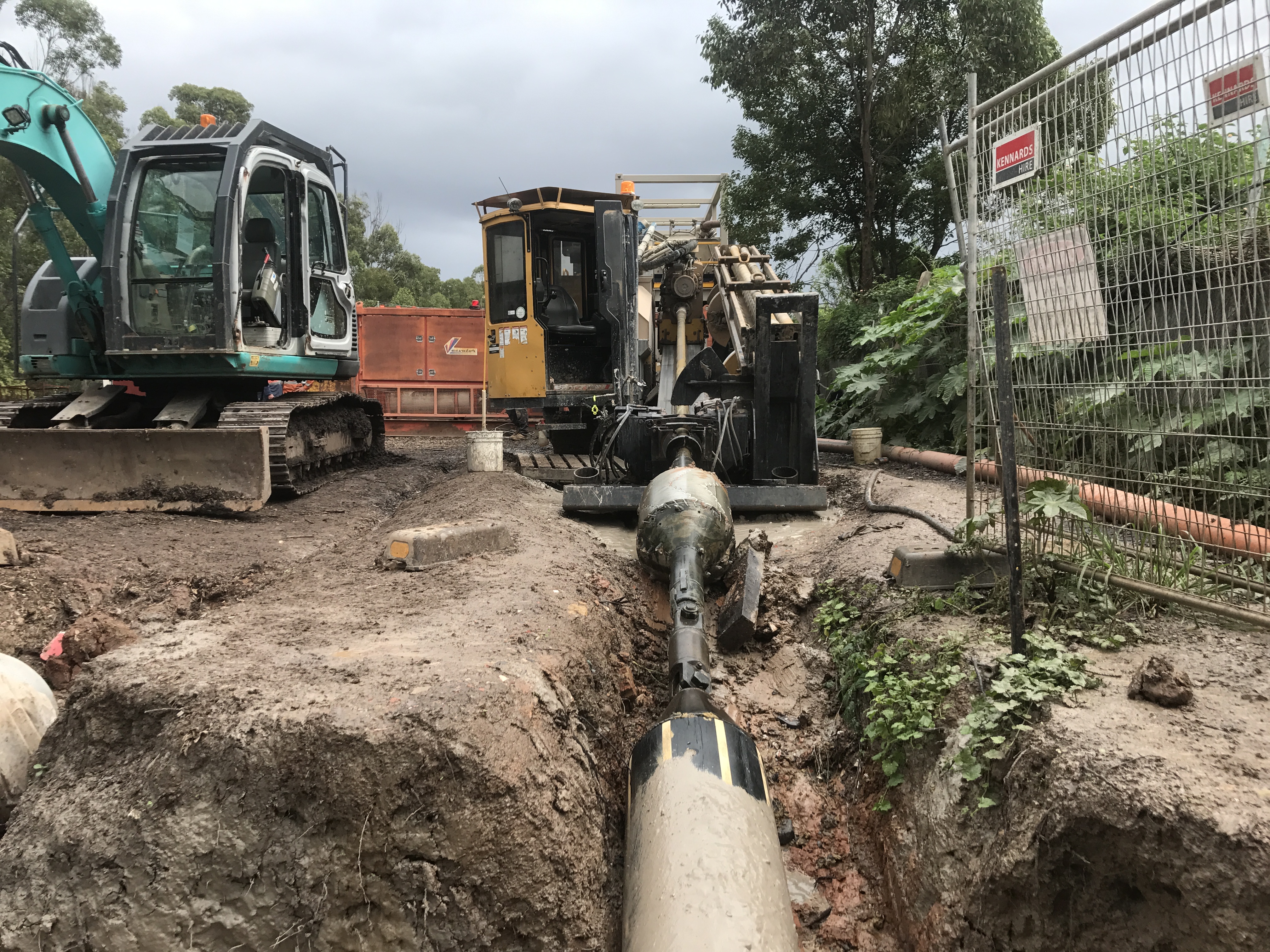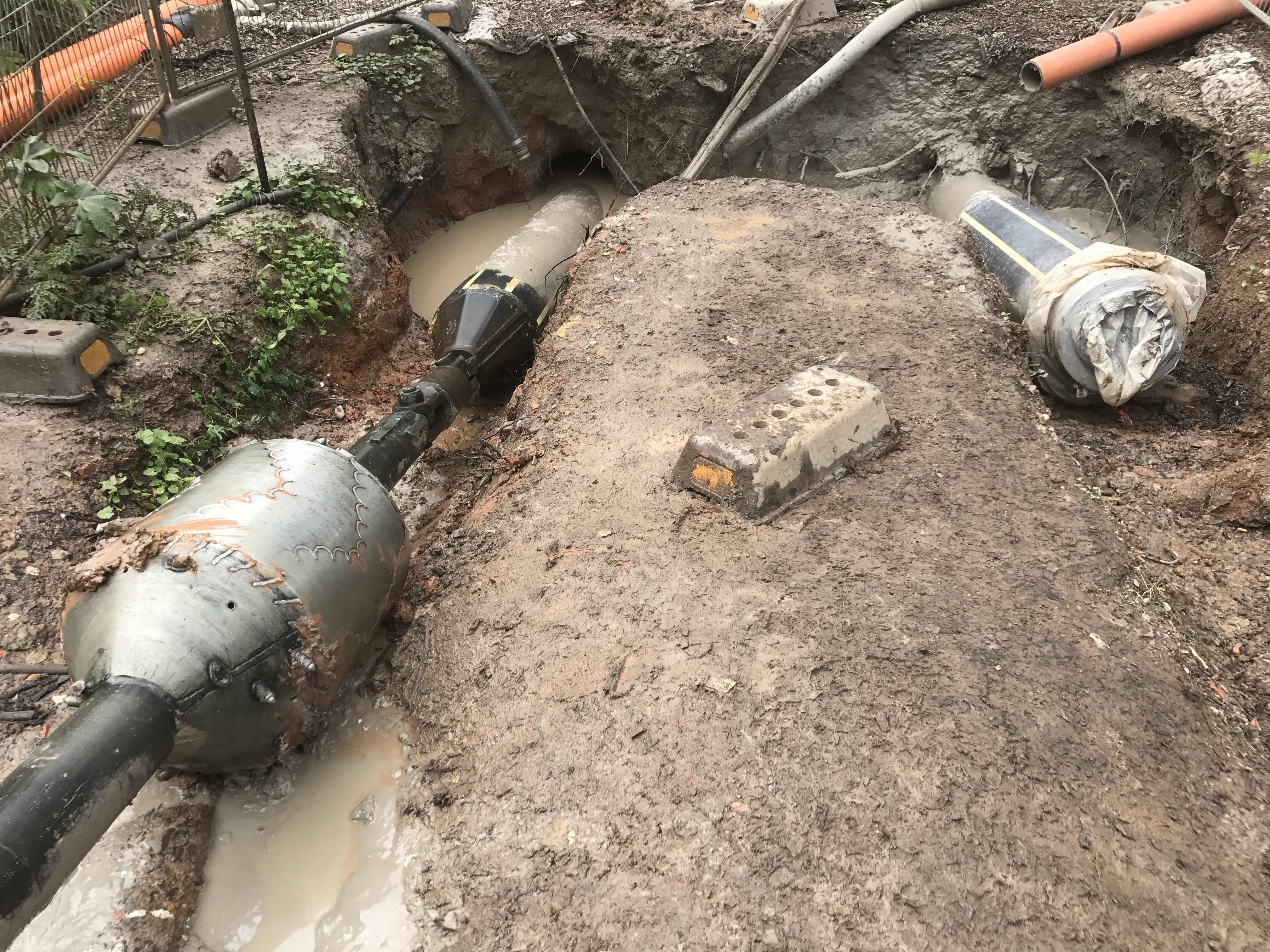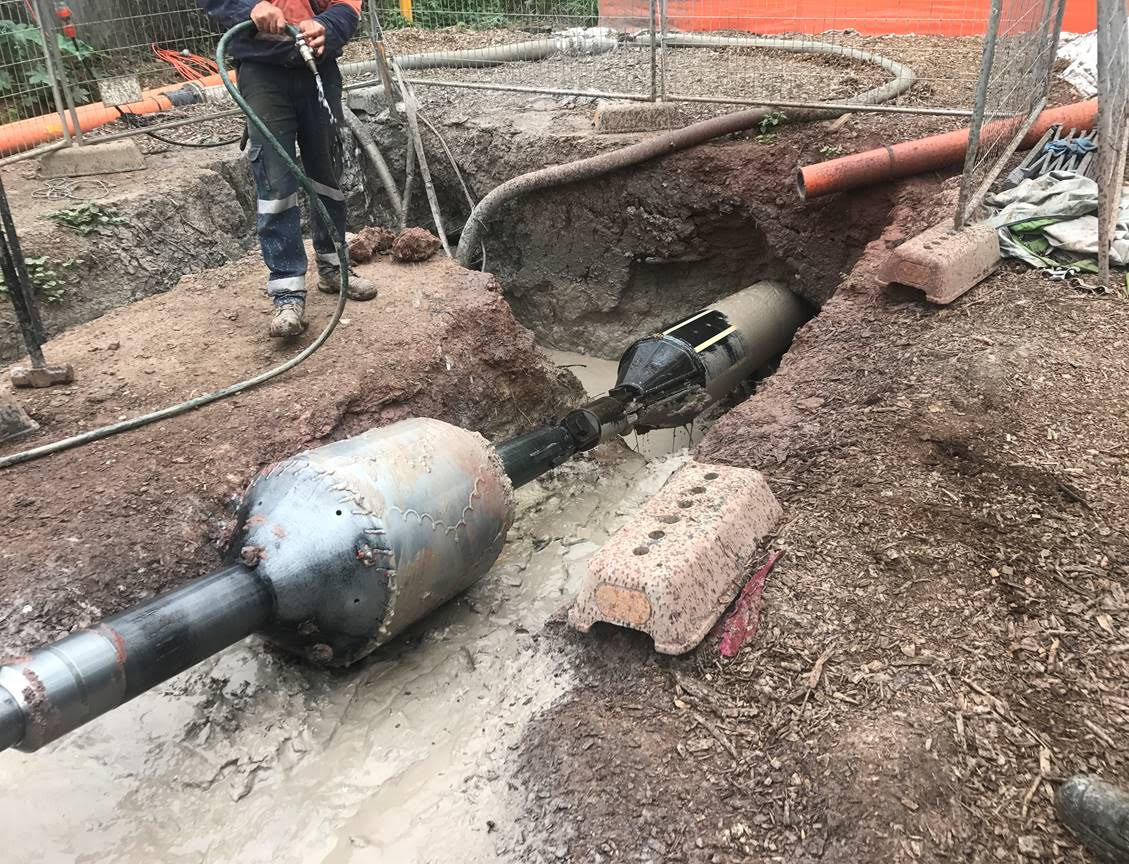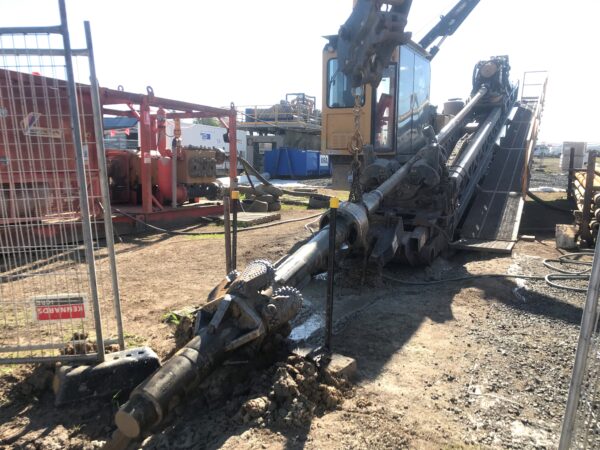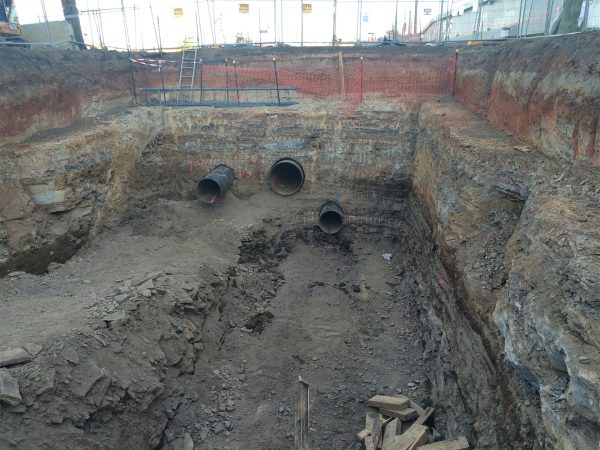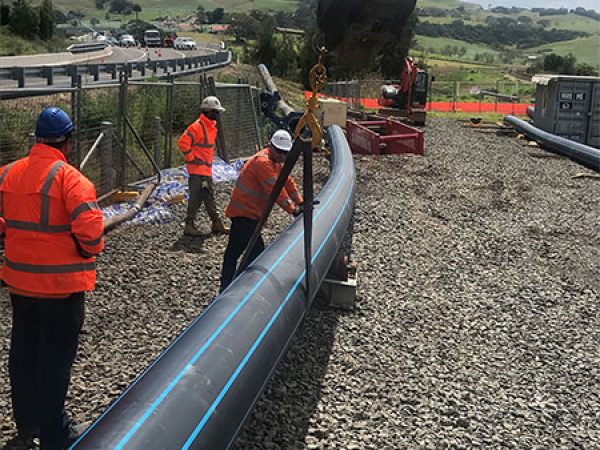Scope of Works
A component of the NWPGA is to transfer wastewater from the Marsden Park wastewater pumping station to the existing Riverstone Carrier via a twin pressure main. The installation of this pipeline was critical as the Marsden Park wastewater pumping station was previously reliant on temporary wastewater services. The proposed pipeline location involved crossing Eastern Creek, and UEA was engaged to complete this technical aspect of the project.
Horizontal directional drilling was used to install the wastewater pipeline in order to avoid impacts to sensitive environmental features, such as road infrastructure crossing, creek crossings and known heritage sites. Activities associated with the HDD scope included the establishment of the drill launch site, drill reception site and pipe laydown area. These areas contained the drilling rig and associated equipment and vehicles, site sheds, and materials storage. The drill reception site also required an area the length of the drill run to string the pipe out prior to the installation.
ABORIGINAL HERITAGE
A search of the AHIMS database was undertaken which identified a total of 14 registered sites within 200 metres of the proposed wastewater pressure main alignment, and four registered sites within 200 metres of the proposed pumping station location. A number of sensitive landscapes were also identified, including Eastern Creek and Bells Creek, which warranted further investigation. An Aboriginal Cultural Heritage Assessment (CHAR) was prepared, which identified areas of moderate significance within the project footprint. The main area was found to be located within the alignment adjacent to an environmental sensitive zone. Due to the potential impact of trenching on these areas, UEA proposed to undertake this portion of the works using trenchless construction methodologies.
UEA developed a comprehensive set of management plans that included a site-specific Construction Environmental Management Plan (CEMP) and AHIP Management Plan. The objective of these management plans was to avoid or minimise the potential aboriginal heritage impacts associated with installation of two 450mm pipes beneath Eastern Creek. The AHIP Management Plan set out all of the safeguards required to minimise any adverse impacts to the aboriginal heritage areas, identified in the Aboriginal Heritage Permit issued by the Office of Environment and Heritage (OEH). This AHIP Management Plan is a sub-plan of UEA’s CEMP and was used in conjunction with the CEMP. UEA identified a number of measures to avoid or minimise the potential aboriginal heritage impacts by erecting exclusions zones around these areas, salvaging identified items for reburial post construction and increasing education process in identifying these objects during the works.
COMPLETION
Both underbores involved the installation of 450mm diameter PN20 SDR9 HDPE pipe, parallel to each other in mixed ground conditions of clay and shale. As the site was located adjacent to a floodwater detention basin, the works limited access to site during wet weather events and also the ability to weld and string both pipelines for installation.
Challenges on the site included:
- Working around highly sensitive ecosystems along Eastern Creek
- Utilising walk-over tracking systems during river crossing and in large Aboriginal Heritage Protection Zones
- Unfavourable surface strata requiring the installation of steel casings
- Minimal height differential between bore ends, which required the use of a drilling fluid return line and required installations across Eastern Creek and within Aboriginal Heritage Protection Zones
- Pipe welding and stringing area being restricted by Aboriginal Heritage Protection Zones and located in the belly of a flood retention basin
- The exit location of bore was located on the far bank of a flood retention basin, with drilling operations occurring during the wet season. This required construction of an all-weather access track that could withstand repeated flood events.

